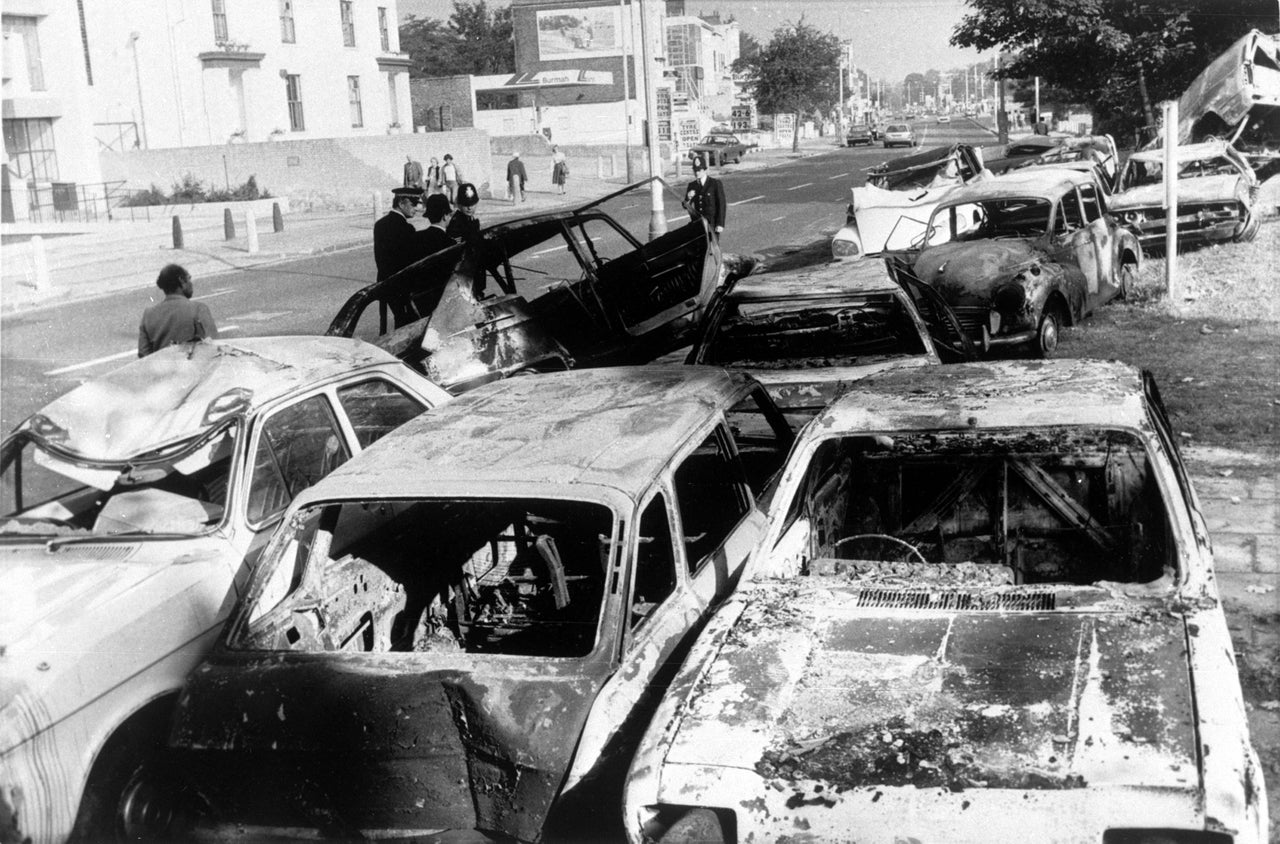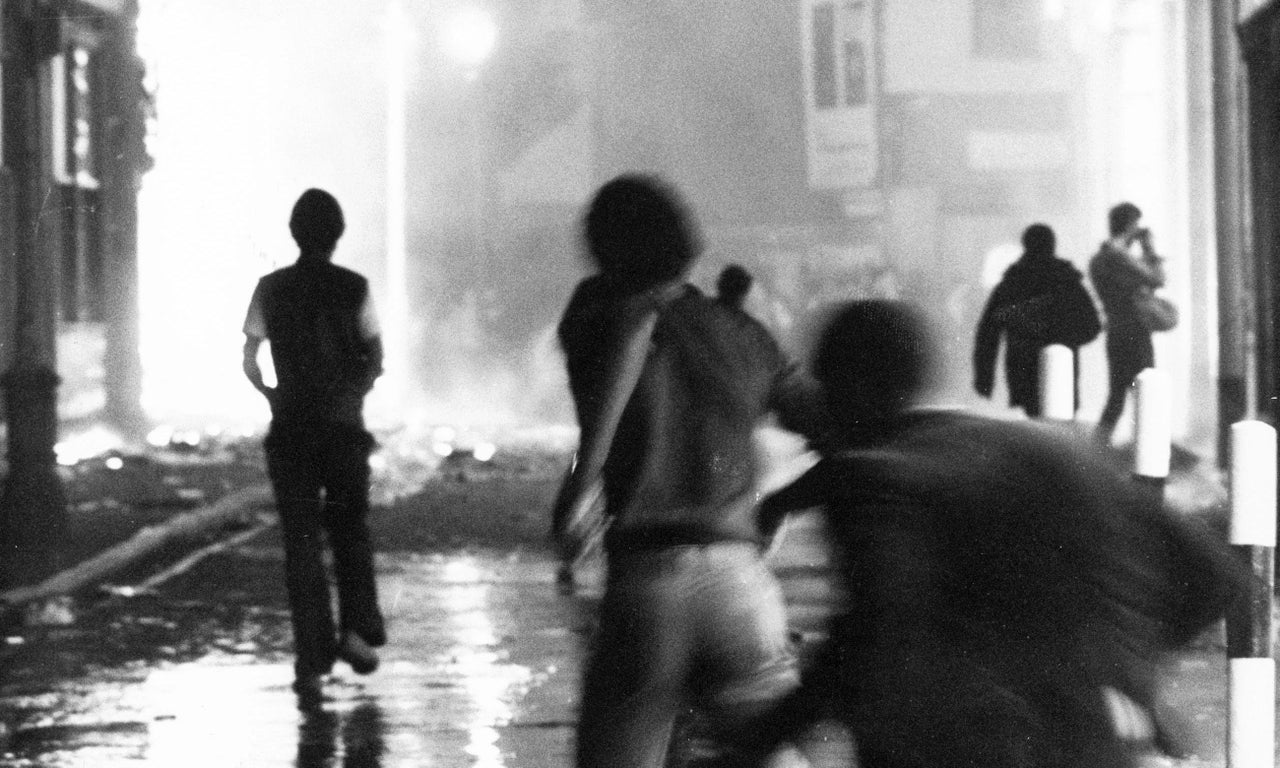It was springtime, and the evenings had just got lighter. Clifton Walters was walking to see his girlfriend – they’d had an argument. In the background, south London was burning.
“It’s semi-romantic, really. Is that sad? That at this great, big time in history, I was just trodding to my girl’s house in Herne Hill,” he says.
Clifton was 20 when, in April 1981, the Brixton riots started. Soaring unemployment among black Brits, growing frustration with entrenched racism from all corners of society, and a barbed relationship with police had been stoking unrest for years.
But the final trigger was the apprehension of Michael Bailey. Stopped on Atlantic Road in Brixton, Bailey was found to have a stab wound by officers, and a gathered crowd became agitated, thinking he was being arrested rather than treated for his wound. Rumours spread that Bailey had been left to die.
The confusion escalated. For three days, young, black men battled against police, attacking buildings and setting fire to cars. More than 300 people were injured.
It’s now been 38 years since the unrest, and many of the men who took part still live locally. They see a new frontline in the battle against inequality: gentrification.
–––––––––
Clifton had, by his own admission, bigger fish to fry that day as the chaos unfolded.
“I walked through the middle of Railton Road ... as stuff was going on in the background. I certainly didn’t have anything to do with it, but I wasn’t concerned about my safety at all. It never occurred to me that I was in any kind of trouble – because I knew they [the rioters] weren’t coming for me – it was aimed at the police.”
Now 58, he was sympathetic to the cause. “Stop and search took over our lives. Everybody would say, on average, you’re getting that once a week and three-four times – if you’re lucky. It was that bad; a pain in the ass.
“People were angry and it boiled over, in the end. Somebody had to say no. England was a horrible place to be at the time.”
Brixton legend Blacker Dread, real name Steve Burnett-Martin, was on the frontline. He disagrees with the label ‘riots’, and instead calls it an uprising.
“A riot is when you go to a football match and people start fighting and mashing up everything. It was an uprising because the system was geared up against us, racism was rife – it’s still rife now,” he told HuffPost UK

He continued: “I’ve been on every march – Stephen Lawrence, New Cross Fire march, I’ve joined the African National Congress; anything to do with black people I am there because we have to fight to get justice in this country.”
The reggae record producer ran a music shop on Coldharbour Lane in Brixton from 1993 to 2014, which was regarded as a cornerstone of the local community. “Police used to terrorise people,” he says. “Often, the Special Patrol Group used to travel in their vans and if they saw more than one black person congregate then they’d run out on them. A lot of black youths were given criminal records and they didn’t do anything.”
Decades later, local traders have been priced out and property prices have sky-rocketed. “Gentrification is a part of breaking down the structure of the black community in the UK,” he says. “By taking black people’s stronghold away, there’s nowhere in London where the community can actually gather and say is ours; they’ve watered down Harlesden, Peckham, Croydon, Shepherd’s Bush. That’s what has happened to Brixton.
“Anywhere you see a Foxton’s estate agents – that place is going to change,” the 60-year-old warned. “Years ago, I’d seen the H&Ms, JD Sports, Starbucks – plus internal plans that I’d been privy to – and knew the writing was on the wall.”

Actor Tony Cealy, 54, also participated in the riots when he was aged just 15. He says the triggers to the unrest are still present to this day.
“There was so much to the uprisings,” he explains. “Pretty much what happened back then is still going on today. Some young black people on the streets nowadays have had enough of the mistreatment by the state – to be oppressed in your own community, there’s only so much you can take.
“It was a time of change; it was an awakening that it wasn’t a small thing happening to me and some of my friends. [Harassment] happened to a lot of young people in inner city communities. I do remember lots of times being stopped and searched; the Special Patrol Groups vans.”
“The police are more against us than for us”
- Kevin Smith, 19
In November 1981, Lord Scarman’s report on the riots was published. In it he stated there was “no doubt racial disadvantage was a fact of current British life”. He highlighted problems racial disadvantage and inner-city decline, warning that urgent action was needed to stop racial inequality becoming an “endemic, ineradicable disease”.
But how much has changed? Nationwide, black people are nine times more likely to be stopped and searched by the police, and many feel that the Metropolitan Police is still institutionally racist.
Meanwhile black unemployment is at 9% double than that of white people; black students are less likely to graduate from university with top degrees, and are less likely to obtain graduate jobs.
Black people are also four times more likely than white people to be detained under the Mental Health act, three times more times likely than white people to be permanently excluded from school.

Between frustration with the government’s handling of the Grenfell tragedy and the Windrush scandal, which many felt had racist undertones; cuts to vital services, such as youth provisions and police numbers – morale is low in the black community.
Kevin Smith, 19, from east London, says there remains a profound lack of confidence that young black men have in the police. “The police are more against us than for us.
“Right now I am wearing a tracksuit and a hoodie; if I put my hood up [and go outside], I’m getting stopped and searched for no reason. I feel like I can’t depend on the police [to protect me],” he told HuffPost UK in March.
The teenager was referring to a recent announcement of extra £100m for police forces in England and Wales to tackle knife crime, which is hitting young people the hardest. In London young black men account for a disproportionate number of knife victims and perpetrators, and rates of knife crime have reached a historic high.
After near four decades, the younger generation living in south London see clear parallels.
Ackeem Bentley, 25, who witnessed the 2011 riots in London, told HuffPost UK: “There is a lot of social unrest nowadays – young people are frustrated. History tells us when that happens eventually tension spills over and people decide that enough is enough.
“I wouldn’t be surprised if we see another riot in the near future.”